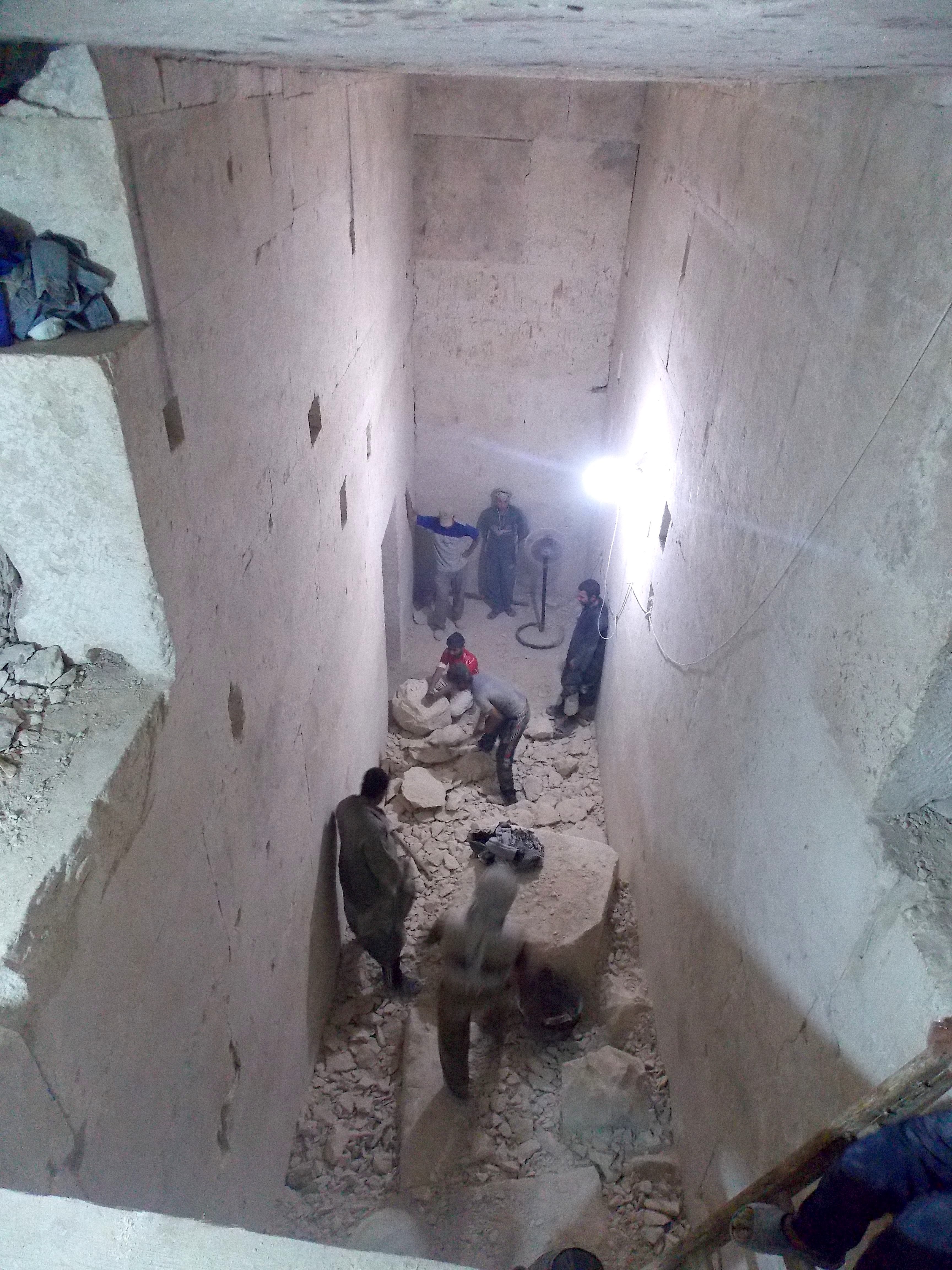- EraPharaonic
- Project DirectorDr. Josef Wegner
- LocationSouth Abydos
- AffiliationResearch Supporting Member
- Project SponsorUniversity of Pennsylvania Museum of Archaeology and Anthropology & Antiquities Endowment Fund
- Project Dates1996-Present
Established ca. 1850 BCE by the 12th Dynasty king Senwosret III, the site of Wah-Sut-Khakaure-maa-kheru-em-Abdju (“Enduring are the Places of Khakaure-true of voice-in-Abydos”) was a royal mortuary complex focused on a subterranean royal tomb at the base of the high desert cliffs. A temple for Senwosret III stood at the edge of the Nile floodplain. A town site near the temple housed a population of administrators, priests and other personnel who maintained the king’s funerary cult. The cult of Senwosret III persisted over approximately three centuries at South Abydos.
Extensive excavations in the late 1990s and 2000s documented the ruins of the Senwosret III mortuary temple. During that time the palatial residence of the mayors of the town of Wah-Sut-Khakure was discovered and excavated. Ongoing excavations continue to document the variety of ancient activities that occurred in the landscape around the temple and town site. Extensive remains of industrial and production areas have been exposed in recent years and the continuing research program aims to understand the wider use of the landscape at South Abydos during the Middle Kingdom and Second Intermediate Period.
Work inside the subterraean tomb of Senwosret III.
Photo: Josef Wegner
A major focus of work in the last ten years has been the documentation of a royal necropolis that developed during the late Middle Kingdom around the tomb enclosure of Senwoset III. Named the “Mountain of Anubis” in ancient times based on a prominent peak in the high desert cliffs, the tomb enclosure of Senwosret III developed into the nucleus for a royal necropolis that includes tombs of eleven kings of the 13th Dynasty and Second Intermediate Period. These include tombs attributed now to Kings Neferhotep I and Sobekhotep IV (ca. 1750-1700 BCE), as well as a group of eight tombs of kings dating to the later Second Intermediate Period. One of these, the tomb of King Woseribre Seneb-Kay (ca. 1650 BCE) was discovered and excavated in 2013-14. Ongoing research in the royal necropolis has the aim of understanding the long-term development of the area and the changing nature of royal funerary activity at South Abydos. Related work in the form of the South Abydos Tomb Census has been investigating remains of private cemeteries the developed in areas behind the town and temple of Senwosret III. These tombs provide evidence for the evolving population at South Abydos.
Since 2008 a key priority of the archaeological program has been the excavation and documentation of the 180-meter long subterranean tomb of Senwosret III. This structure – the first known example of a hidden royal tomb in Egyptian history – is a masterpiece of pharaonic architecture and engineering. The large scale of the tomb has necessitated a long-term excavation project accompanied by conservation and site-management activities with the goal of stabilizing the tomb for the future and making it accessible for visitors to Abydos. With support from ARCE’s Antiquities Endowment Fund, and working in collaboration with the Egyptian Ministry of Antiquities, the tomb of Senwosret III is now in the final stages of preparation for visitors. Similar work in the form of completing modern protective buildings to open the royal tombs at South Abydos have been completed for the tomb of Seneb-Kay and are planned for several other tombs. The ruins at South Abydos provide an unparalleled window into society and culture of Egypt during the Middle Kingdom and Second Intermediate Period. The ongoing work aims to recover and publish the remarkable archaeology of this unique site, and develop a management program to preserve the site for the future.
Restoration work on the tomb of Seneb-Kay. Photo: Josef Wegner
Credits:
Project Core Team Members:
- Dr. Jennifer Houser (Penn Museum)
- Dr. Kevin Cahail (Penn Museum)
